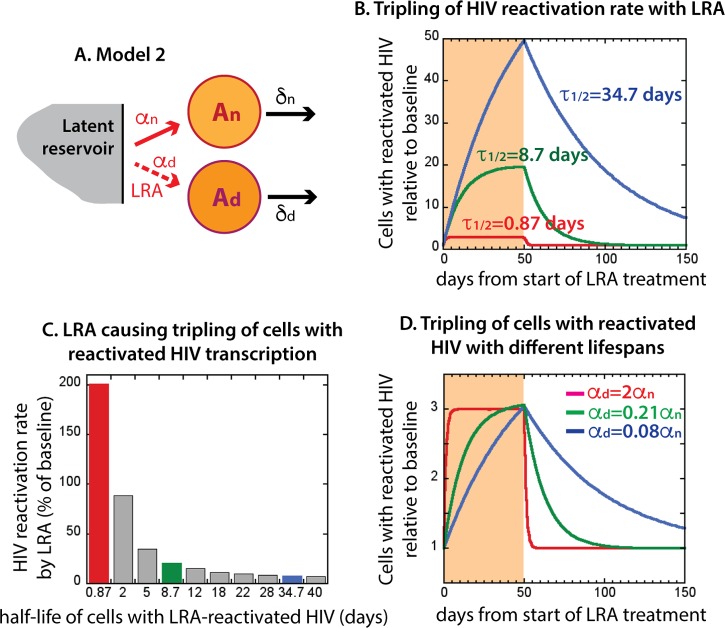FIG 3.
Life span of cells after HIV reactivation by an LRA. Cells with HIV transcription reactivated by an LRA may live longer than cells with naturally reactivated virus. (A) Model 2, unlike model 1, has two types of HIV-transcribing cells: short-lived cells with naturally reactivated HIV, An, and potentially long-lived cells with LRA drug-reactivated HIV, Ad; again, the model does not depend on the processes within the latent reservoir. (B) Increase in the number of all virus-transcribing cells (relative to baseline with no LRA) when the half-life of the cells with LRA-reactivated HIV is 0.87 days (δd = 0.8 day−1; red line), 8.7 days (δd = 0.08 day−1; green line), or 34.7 days (δd = 0.02 day−1; blue line) and the LRA-induced HIV reactivation rate, αd, is 2αn, so that the total HIV reactivation rate, α, is 3αn. (C) LRA HIV reactivation rate (as a percentage of the natural virus activation rate) that would be necessary to measure a tripling of the number of HIV-transcribing cells over 50 days, depending on the half-life of the cells with LRA-reactivated virus (half-life: 0.87 days, red bar; 8.7 days, green bar; 34.5 days, blue bar). (D) Dynamics of tripling of HIV-transcribing cells with different life spans under LRA (half-life: 0.87 days, red line; 8.7 days, green line; 34.5 days, blue line).

